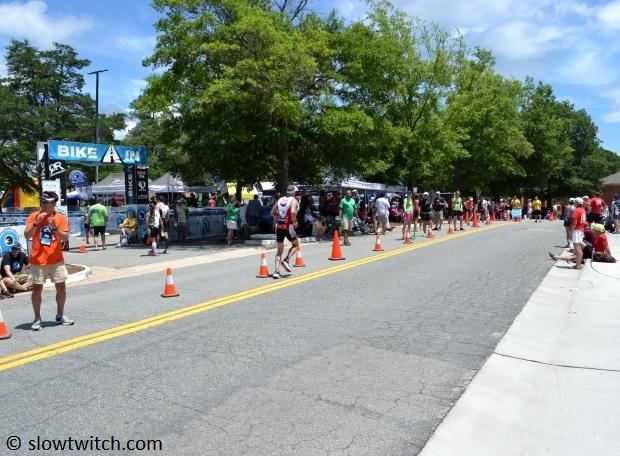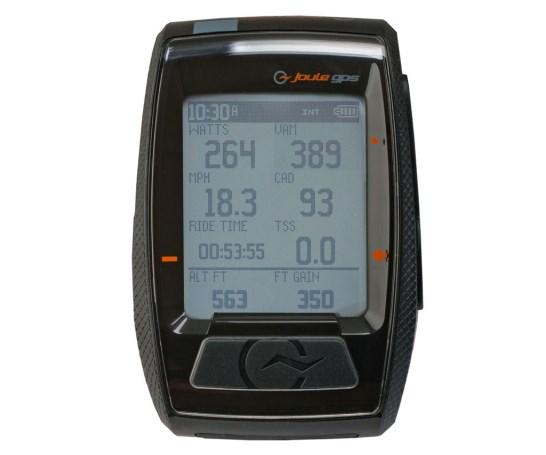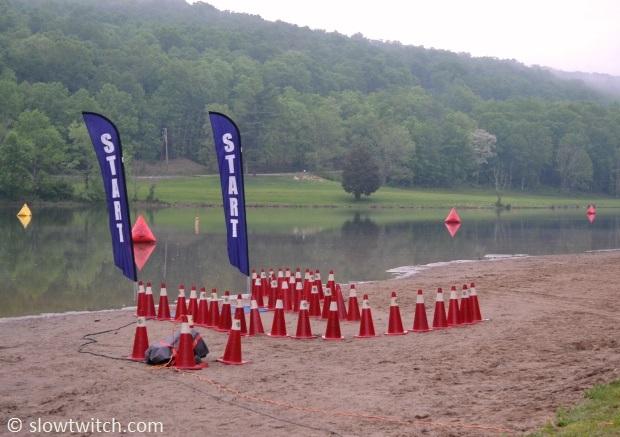Slowtwitch Mailbag – 10
This is the Slowtwitch Mailbag, where we answer readers’ triathlon-related questions. To submit your own question, send an email to us at: mailbag@slowtwitch.com. Don’t be shy – we want to hear from you!
—
Keith writes,
'I am interested in having my bike painted. It is a carbon frame. Can you provide some insight on the best way to approach this (stripping, sanding, painting over, type of paint, masking, etc…) and some pros and cons of different ways of doing this. Also, are there any professional painting services with experience in this area?'
For our response, we contacted Toby Stanton at Hot Tubes. Not only do they make their own custom bicycles, but they are also the only authorized company that can repaint your Cervélo (without voiding the warranty). I personally remember the days when I owned an aluminum P3 and lusted after a Hot Tubes paint scheme – unfortunately it was beyond my college student budget. Toby gives us a fantastic and very thorough response below.
He writes,
'Keith, good question and one I get a lot.
Carbon frames need to be stripped very carefully in order to not compromise the integrity of the composite structure. In general, it's not necessary to remove all of the original paint; here's why. When most frames are manufactured, the steps taken by the manufacturer to initially paint them are really good. Bonding paint to composites requires really good prep work and that the surface be very clean and receptive, surface texture-wise, for maximum adhesion. Most composite frame manufactures also use some form of body filler for the molded joints to get smooth, clean lines. In most cases, hand sanding the original paint finish with 220 grit, removing all decals and non-painted graphics and feathering out any chips in the paint, is adequate for a good surface to start with.
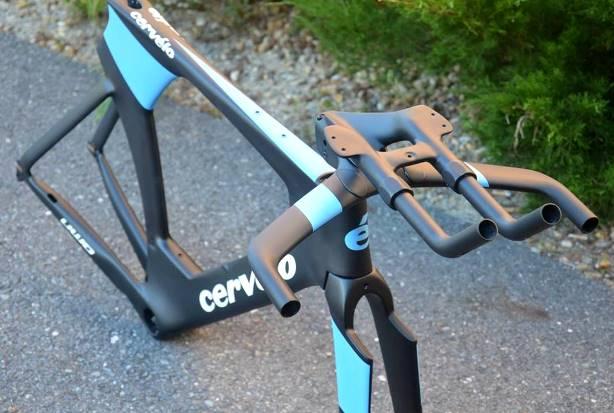
A lot of bike enthusiasts worry about adding additional weight to the frame by not removing all the original paint. You will add to the overall weight of the frame by not sanding off all the paint but the net gain in weight is [only about 150 grams on average].
In general, you want to avoid chemical strippers, especially ones commercially available in the retail world. The likelihood that these methylene chloride based strippers will harm your frame is high and definitely not worth the risk.
After the frame is stripped to an acceptable level, it should be cleaned with one of several available cleaners for urethane based paint systems. I use a catalyzed epoxy primer from PPG which I bake and wet sand with 400-600 grit. Baking is not required but it speeds up the process.
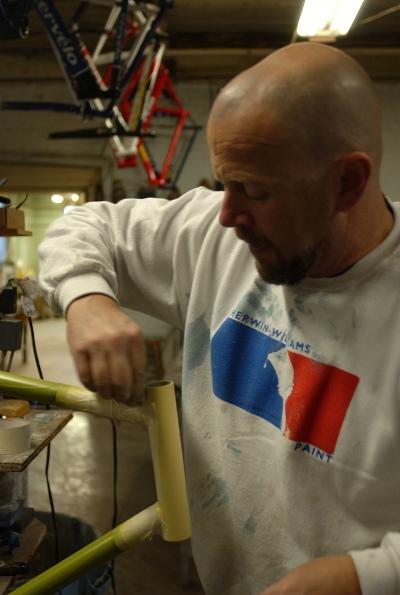
Once the primer is sanded and cleaned you are ready for color. Color is thin and not especially strong, so don't lay it on thick or it will never dry properly. If you are doing multiple colors and want to mask for graphics, make sure the initial color is dry completely and tack-free. It's better to wait and make sure it's dry than rush and need to repair and re-do your first color. I use one of several vinyl masking products available on the market. You can use standard vinyl from a sign shop, too. The difference is thickness and the amount of adhesive they use. Vinyl made for masking removes easy and leaves no adhesive on the paint.
Once you have the color and graphics down you will want to go over any painted lines with reverse rolled masking tape. The tape will grip and pull off any paint edge lips and loose edges and give you a cleaner line. Now you are ready for clear. I use PPG 2021 urethane clear. It's expensive and, in general, can't be purchased in smaller volumes than one quart for the clear, half a pint for the catalyst and one quart for the reducer (and you need all three).
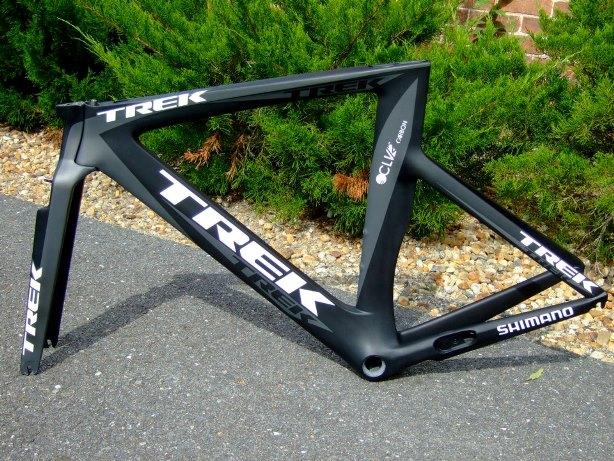
For a typical carbon frame and fork you need about eight ounces, total, of activated clear. Apply one coat and walk away. Every paint system is different and humidity and ambient temperature affect drying time so read the directions. You can find the data sheets for all paint systems online so understand what you are doing before you start. Most frames will take three to six coats of clear for a proper finish. The last coats need to be a bit ‘wetter’ to limit dry overspray which is common when painting bikes.
Almost all catalyzed clears can air dry to complete hardness so give it all the time it needs. If you rush it, you will be sending it to me or one of my other bike painting comrades to redo what you couldn't wait for and I assure you, it will take longer than waiting the time you should have taken in the first place.
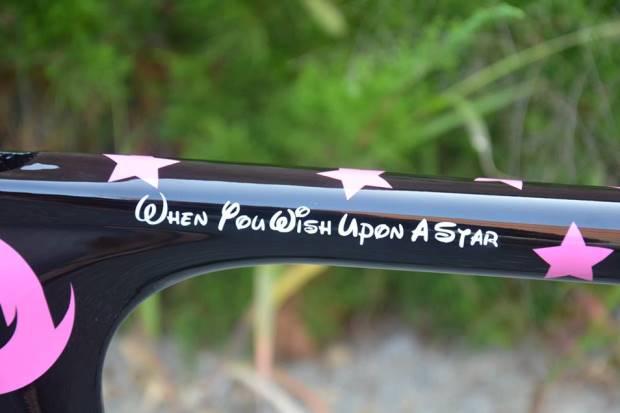
The most important thing is use a proper painting respirator for every painting step. A dust mask won't do, and most masks you get from Home Depot or Lowes won't do either. Get a mask from the paint supplier. They sell disposable masks that aren't too expensive. This paint will kill you if not properly protected and you don't need ten years of exposure to do it, one good exposure can do it. Be careful!
Be prepared to spend some money and time if you are going to do it. Figure on spending several hundred dollars on materials alone.
Good luck,
Toby Stanton
Hot Tubes
—
Aaron writes,
'I am new to riding my triathlon bike having come from spending my first year on a road bike. I have my overall bike comfort pretty much dialed in at this point, but I have a question about getting up out of the aero position on IM distance rides. I know if someone says they need get up out of the aero position 3 or 4 times during a 40km TT to be comfortable during the ride, I would say something isn't right there. I can stay in the aero position without coming up once during a 90km ride, although at the end my ‘tushy’ is feeling it a bit. What about the IM distance? How much time out of the aero position is too much? I am certain the amount of time is different between a pro and MOP. Any light you can shed on this would be appreciated.'
How much should you get out of the aero position? If you read a lot in our forum, you’ll find that the answers from the most serious tech geeks range from roughly zilch to zero, plus or minus a factor of ‘how dare you even ask!’ Aero or die!
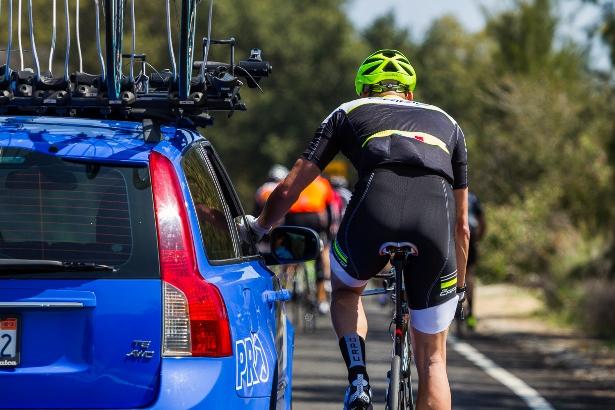
Above image © Jake Orness
I kid because I love. Allow me to elaborate a little bit on your topic.
In general, you do want to limit your time out of the aero position. As you can guess, you’re going to be less aerodynamic while cruising around on your base bar, which slows you down. If your aero position is so aggressive that you can’t maintain it, you’re going to be slower overall than if you had an aero position that was slightly more upright – and sustainable.
There really are no standards for how many times you should break your position for a given distance; so much of it depends on the course design. A race with many steep uphill sections will take you out of your aerobars more than a pancake-flat course. Additionally, 180 degree turnarounds also require use of your brakes and base bar.
The photo below is a perfect example of a necessary out-of-aero experience. Minnesota-based pro, David Thompson, narrowly avoided a young spectator that ran out on to the course at LifeTime Minneapolis.
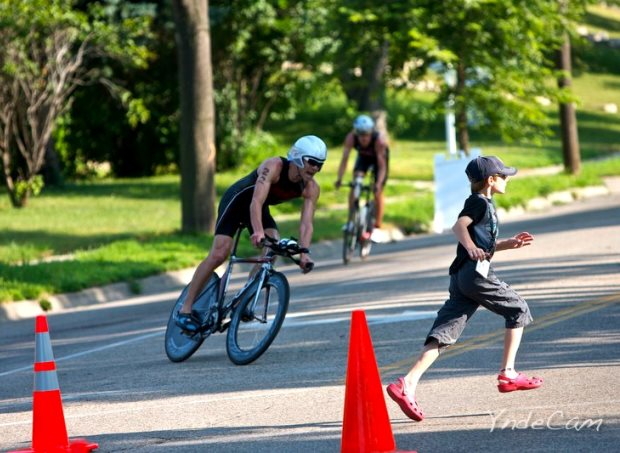
My old home-town 40k TT course was a non-technical out-and-back, with a single 180 degree turn at the halfway mark. I would get out of the aerobars for that, and probably one more time on a short hill. For most Olympic distance and half Ironman races, I try to limit my out-of-aero times to places that the course demands (turns, aid stations, etc). For Ironman, I personally think that conditions change a little bit. In addition to things like turns and aid stations, I don’t think it’s a bad thing to take a couple ‘stretch breaks’. We’re simply not designed to in one position for five, six, or seven hours at a time (I’m reminded of this every time I take a long plane ride). Also, with a marathon to think about, you don’t want to feel absolutely miserable heading off the bike.
My advice would be, as you suggest, to overall limit your out-of-aero position. If you do need to take a break, try to do it on sections of the course that will limit your losses – uphills (where everyone is going slow) and downhills (where you’ll maintain good speed even if you’re standing up). Flat sections and headwinds are momentum and aerodynamic killers, so try to avoid leaving your bars during those times.



